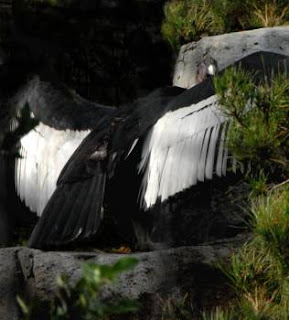
Here's an Andean Condor, Vultur gryphus, showing us some wing. Perhaps he was enjoying a little sun on an otherwise cool and cloudy day.
Photos of birds, fish, flowers and miscellaneous things that catch my eye and instill a sense of wonder.
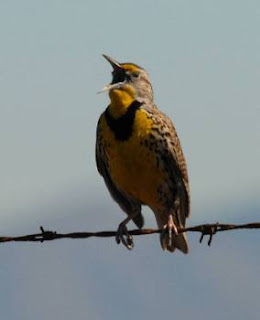
Clearly, a little barbed wire was not enough to scare off this Western Meadowlark, Sturnella neglecta. Nor was it enough to keep him from singing a wonderful melodious tune. Not even my passing by with my huge telephoto was enough to phase this Meadowlark. I have heard them for years but, ironically, this is the first one that was audacious enough to pose in plain view for a snapshot. What a sight indeed.
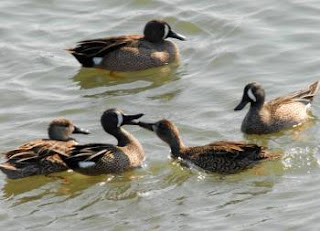
Even ducks have hissy days. Here are two Blue-Winged Teals, Anas discors, having a hissy (literally). They are discernable by that telltale white crescent on their face. Blue-Winged Teals Summer in Canada through the Southern U.S. and range all the way down to Argentina for the Winter. This one was at the Mission River Preserve.
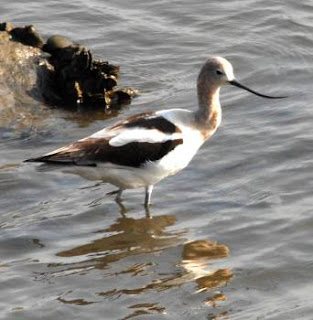
A posting or two back, I promised a picture of an American Avocet, Recurvirostra americana. Well, here he is showing his lighter Winter colors. I had been pondering why their beaks are upturned so I did a little digging and found my answer. They use the base of their beak to stir up the mud and the little crustaceans which they prey upon. They also have a predilection for Brine Shrimp in the Great Salt Lake although they are more likely feeding on little amphipods in San Diego. Oh, and in case your Latin is a little rusty, Recurvirostra refers to the upturned (recurvi) nose (rostra/rostrum).
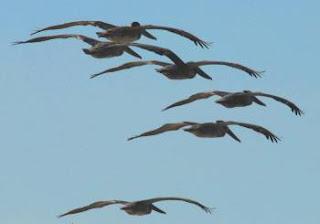
I saw these Pelicans in a huge formation flying over Imperial Beach. The California Brown Pelican used to be endangered. DDT was causing their eggs to crack. However, they are now a success story species recovery and for a regulatory change that banned DDT. They are now one of the few species successfully being taken off of the endangered species list!
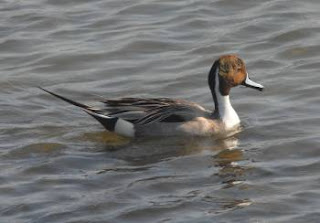
I saw this Northern Pintail, Anas acuta, at the Mission River preserve today. The ducks were out in force as they typically are during low tide. The seagulls were busy dropping clams on the pavement as well. Also, I finally saw an Avocet. It had me wondering how it helps gather food by having an upturned beak. It's fun being on the migratory route of so many birds.
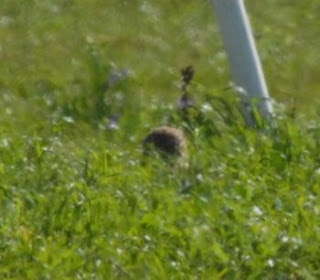
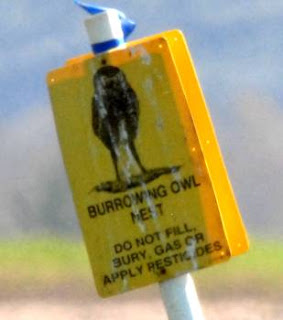
They have nesting Burrowing Owls, Athene cunicularia, at the Tijuana Estuary Preserve. They are on the inside of the airbase fence so you can only see them from a distance (perhaps 150 feet?). I walked right by the first time. Somebody told me about the tiny little yellow signs the second time and, voila, there they were. It is ironic that the signs are covered with bird poop. I suspect it isn't owl poop either.
They range throughout North and South America and are threatened through most of their range by habitat loss. These owls were far enough away that I could barely see them with the naked eye. Thus, these pictures are the best I could do with my 500mm lens from the fence. I think I'll have to settle for seeing the burrowing owls at the Wild Animal Park if I want to see any up close.
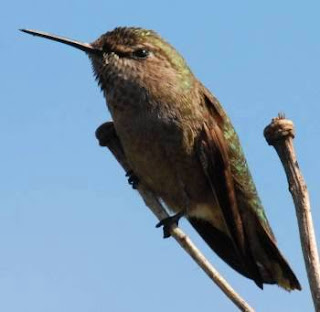
I saw this tiny little female hummingbird at the Tijuana Estuary the other day. After much staring at pictures and gnashing of teeth, I decided that it was probably a female Caliope Hummingbird, Stellula calliope. It was decidedly smaller than the other hummingbirds in the area (Anna's hummingbirds) and quite photogenic.
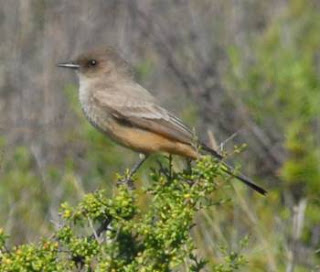
This charming little bird would perch on the wire fence just about 20 feet. As I walked toward him, he would move a little further down the fence, as if I were playing tag. He was spotted at the Tijuana Estuary Preserve. I looked him up in "Birds of San Diego County," by Philip Unitt (which just showed up in the mail today). He is a Say's Phoebe, Sayornis Saya. It says these little guys are a fairly common Winter visitor on the coastal slope. The rest of the year they are found in open agricultural land, grassland, chaparral and desert scrub. They have been known to breed in the Anza Borrego Desert.
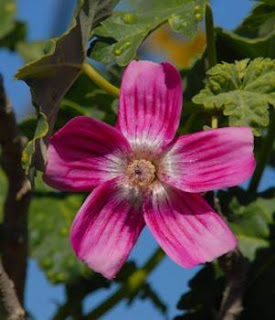
I saw this blooming on the edge of the bog the other day. The flower structure suggests that it is in the Hibiscus family but I'm open to suggestions. Anybody want to take a stab at it? Maybe you have a copy of Hibiscus of the World lying on your bookshelf? Either way, it was pretty so I snapped a quick picture. Besides, it posed better than those tiny burrowing ground owls I was trying to get a picture of.
Much thanks to our anonymous commenter who came to the rescue and provided the name: Lavatera assurgentiflora.

Sophronitis coccinea is in the parentage of many of today's red Cattleya hybrids. It is a diminutive plant of about 3 inches in height and grows in moist, cool cloud forests. It is tough for many people to grow because of the requirement for cool moist conditions while its hybrids are much more vigorous.
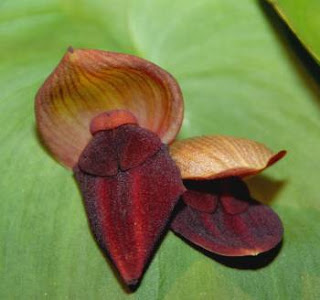
They are having an orchid show at the Newport Beach Fairgrounds this weekend. This is a photo of Pleurothallis gargantua. Many of the familiar pleurothallids are tiny, perhaps not more than an inch tall. However, this one, as denoted by the name gargantua, is perhaps two feet tall with these very exotic flowers in the center of the leaves.
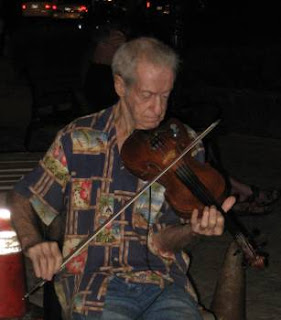
There is a "boardwalk" along Waikiki Beach. Along the boardwalk there is a small shelter with tables for chess and checkers. Sometimes there are people playing the ukelele. Sometimes there are people singing old songs. Sometimes there is a guy playing the violin. He was decent and had a few people listing. Mostly, I think he just enjoyed the company. Company is good. Sometimes a little company is all the doctor calls for.
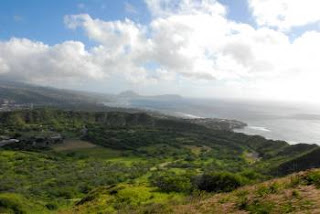
Many people have seen Diamond Head or at least pictures of Diamond Head, typically as viewed from Waikiki. In those pictures, Diamond head looks like a long, low ridge. Well, it's not. Diamond Head is a cinder cone (as you would expect) and is really quite circular as this picture, taken from the top of Diamond Head, easily shows.